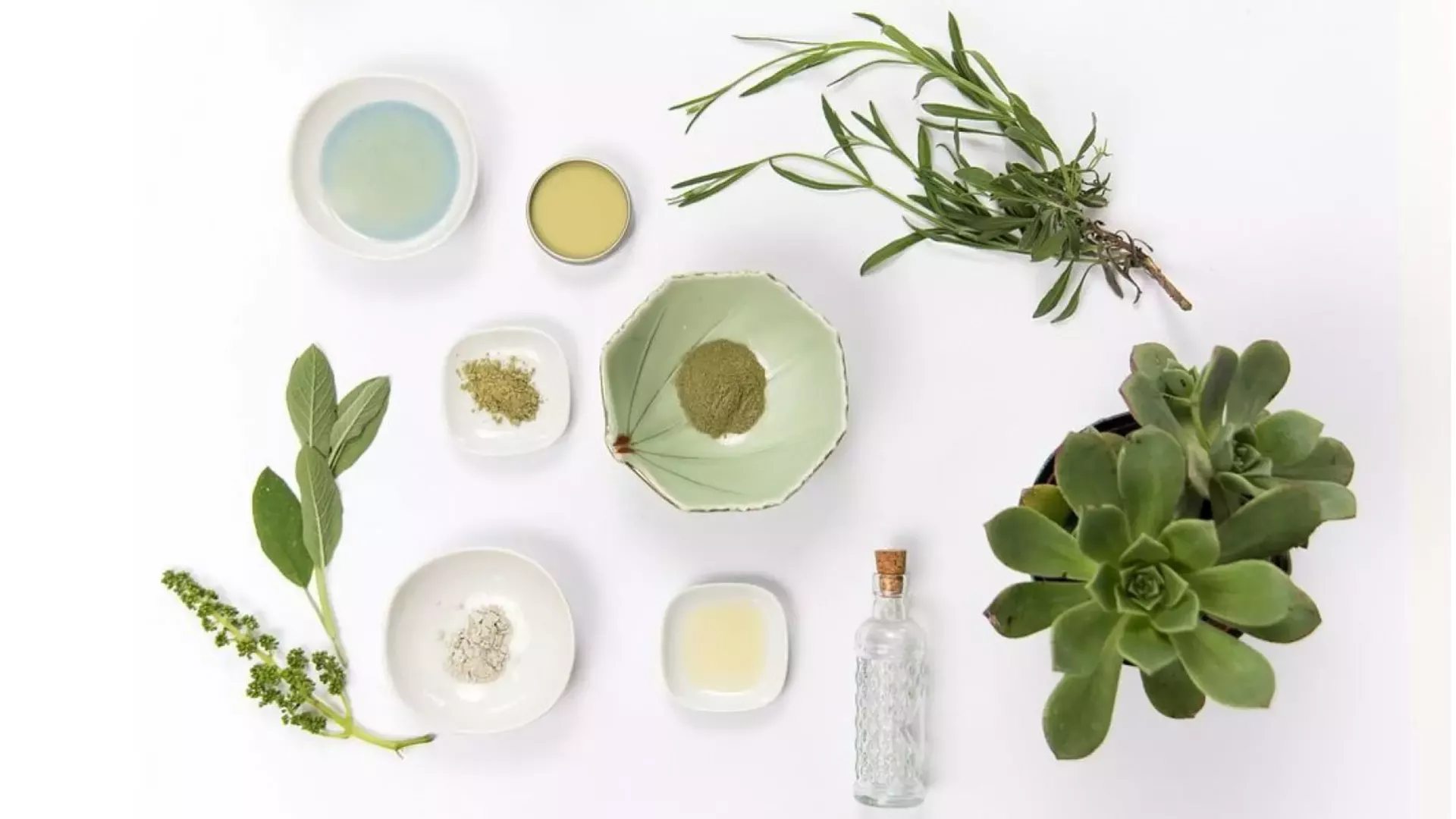Natural cosmetics meet a number of high-standard criteria and for this reason are of top quality. Following a directive from the Public Health Committee of the Council of Europe, it is clarified that a natural cosmetic is one that has been prepared from ingredients of plant origin. Only in two cases - beeswax and lanolin, animal origin is allowed.
90%-95% of the ingredients must be of natural origin, as well as the minimal preservatives used, must have appropriate naturalness approvals.
It is recommended that the ingredients of natural cosmetics be produced and obtained in a way that is safe for their natural environment. Processes such as pressing and filtering (mainly oils and butters), distillation (hydraulics), extraction (essential oils) and drying (herbs) are allowed.
Natural cosmetics packaging must be recyclable and produced from secondary raw materials.
What does organic cosmetics mean?
These are cosmetics whose composition is >95% based on plant ingredients obtained from controlled, certified, organic, biological crops, where the use of pesticides, fertilizers or GMOs during their cultivation is prohibited.
Organic farming uses natural methods to strengthen plants and fight pests and diseases. In the production of organic cosmetics, the use of mineral oils, parabens, SLS and synthetic colors is prohibited.
The ingredients of natural cosmetics
The composition of each cosmetic is defined by INCI (International Nomenclature of Cosmetic Ingredients), and written in Latin. The ingredients are listed on the label in the order they appear in the product, starting with the one with the highest content and ending with the least.
In most cosmetics, the first place in the composition is water, often occupying up to 80% of it. Below you will find a list of cosmetic ingredients that you should avoid in daily use and especially during pregnancy.
- Sodium Lauryl Sulfate (SLS), i.e. sodium lauryl sulfate. It is a cheap and very popular detergent that acts as a foaming and washing agent in cosmetics. It is found in shampoos, shower gels and foams, soaps, toothpastes. It is considered an aggressive detergent that washes away the protective lipid layer from the skin. It has irritating properties, can cause dryness and irritation, itching, dandruff and lead to atopic dermatitis. The milder SLES, Sodium Laureth Sulfate, works in a similar way.
- Parabens, i.e. synthetic preservatives. The most common parabens in cosmetics are methylparaben, ethylparaben, butylparaben and propylparaben. Their use in cosmetics is often a controversial issue as there is no evidence that they are harmful. However, it is believed that parabens can irritate the skin, cause allergic reactions and disrupt hormonal balance.
- Mineral oils. They are petroleum derivatives. In cosmetics, paraffin is most often used (known as Paraffinum Liquidum, Paraffin, Synthetic Wax or Mineral Oil), which deprives the skin of oxygen, clogs pores and inhibits gas exchange and metabolism. It also has a decalcifying effect and prevents the skin from absorbing other substances. Natural cosmetics also do not use other petroleum derivatives, such as petroleum jelly (Vaseline, Pertolatum), ceresin (Ceresin), gases produced during the refining process of mineral oils (Isopropene and Isobutane).
- PEG-i (abbreviation of polyethylene oxide - Polyethylene glycol). PEG-i are mixtures of chemical compounds, including but not limited to propylene glycol and polyethylene glycol, and ethylene oxide (a poisonous gas). The role of PEGs in cosmetics is to give them a smooth and uniform consistency. They are not used in natural cosmetics because they weaken the skin's natural lipid barrier, cause inflammation, clog pores, cause itching and hives. In addition, ethylene oxide, which can enter cosmetics, can damage cells and have a carcinogenic effect. PEG labeling in cosmetics: PEG, PPG, polyethylene glycol, carbowax, polyethylene oxide, polyethylene glycol.
- Silicones. They are synthetic chemicals formed from the residue left over from the distillation of crude oil. Our body is unable to process and eliminate them, so they are permanently stored and can accumulate, for example, in internal organs. Their presence in cosmetics is debatable, as is the presence of parabens. Natural cosmetics avoid the use of silicones, which are not soluble in water and are very difficult to remove from the surface of the skin and hair. The excessive presence of silicone in the hair and skin causes hypoxia, since they do not receive the necessary nutrients. Silicones are easy to recognize, their names usually end with -siloxane, -silanol, -methicone, -silicone. The heavier silicone group includes cyclomethicone, cyclopentasiloxane, trimethylsilyl dimethicone, and trimethylsiloxysilicates.
Apart from those mentioned above, natural cosmetics do not use artificial fragrances and synthetic colors, genetically modified raw materials, ingredients of animal origin, derivatives of synthetic fatty acids and fatty alcohols and derivatives of ammonium chloride.

 Greek
Greek

